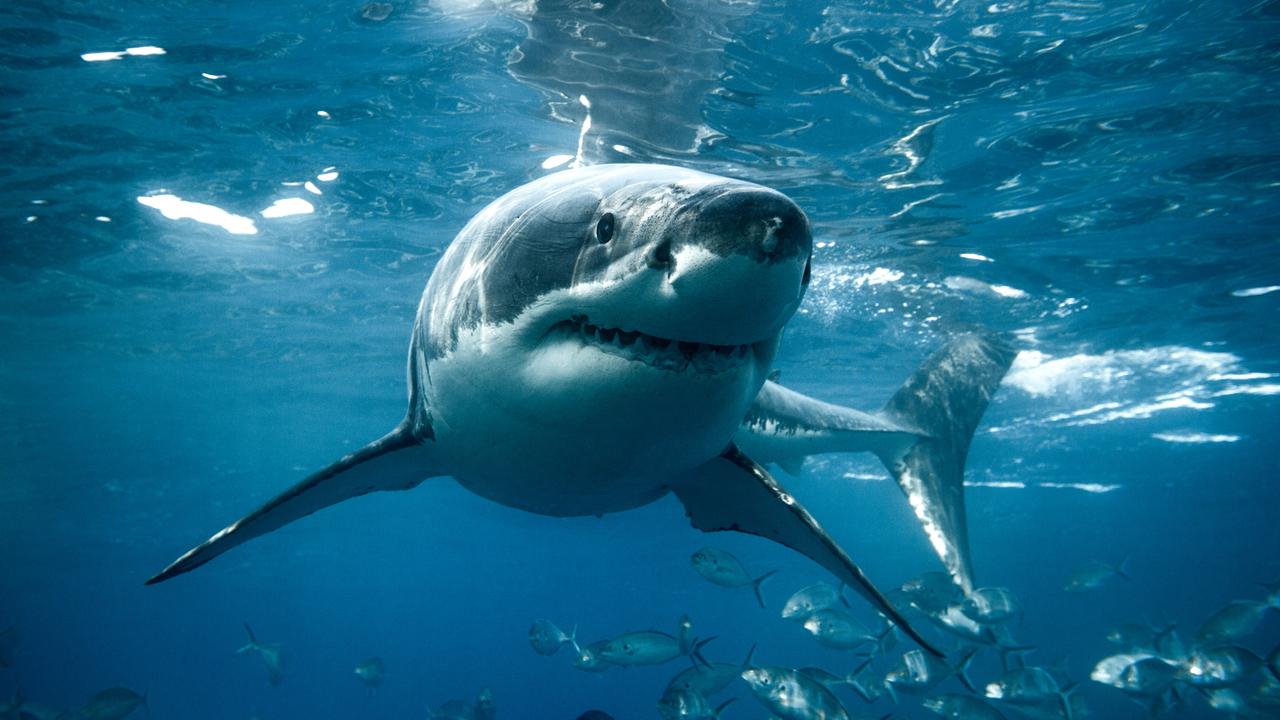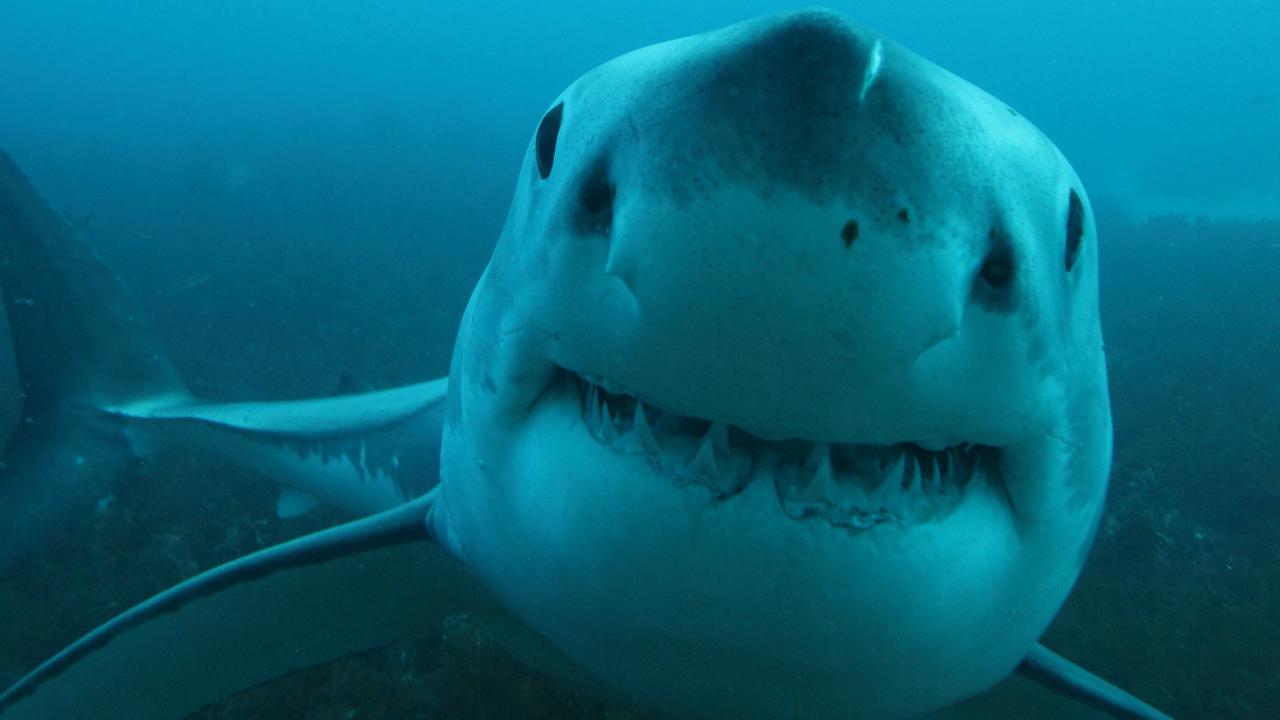Shark habits remain a puzzle at ‘twilight zone’ depths past 1000m
Apex marine predators such as great white sharks regularly visit the midnight zone more than 1000m below the ocean’s surface – but it’s a secret society as scientists don’t know why they do it

READING LEVEL: GREEN
Great white sharks have been discovered diving deeper than 1100m below the surface of the ocean.
A study published in scientific journal PNAS showed large marine predators, such as great whites, tuna and swordfish, made regular visits to the depths of the ocean.
The movements of 12 different types of predatory fish were tracked as they travelled 200m to 1000m below the ocean’s surface to the mesopelagic zone, or twilight zone, and even further to the midnight zone, which is 1000m to 3000m below.
Researchers said they didn’t know why the sea creatures travelled so deep into the ocean. They said the twilight and midnight zones were much deeper than the zones where the marine predators usually fed.
Great white sharks were recorded diving as deep as 1128m, while whale sharks were recorded diving 1912m. Swordfish went as far as 2000m below the surface.
Woods Hole Oceanographic Institution assistant scientist and study lead Dr Camrin Braun told LiveScience magazine the deep ocean must be an important habitat for ocean predators.

“It’s clear there are good reasons for these animals to dive deep, otherwise why would they all do it?” Dr Braun said.
The researchers’ findings showed there could be a link between the dives and the deep scattering layer (DSL), which is an ocean layer densely packed with small fish and other creatures.
The study suggested that large marine predators fed on the creatures in the DSL.
But the reason some predators travelled even deeper than the DSL remained a mystery.

“There’s good evidence for some species or situations in which diving deep is clearly for foraging,” Dr Braun said.
“However, we also find several cases where we can pretty definitively say the use of the deep ocean is not for feeding — or if it is, it represents a totally different kind of predator-prey interaction.”
Dr Braun said the evidence suggested the twilight zone had more creatures than scientists first thought and that its role for predators needed to be better understood before humans were allowed to fish in it.
POLL
GLOSSARY
- marine predators: sea animals that hunt and eat other animals
- oceanographic: scientific study of oceans
- habitat: place where animals live
- densely: thickly or heavily
- foraging: looking for food
- definitively: say with certainty
- predator-prey interaction: the way animals hunt other animals
EXTRA READING
Mystery surrounds half-eaten great white shark
Golly goby! New fish found on Great Barrier Reef
Hammerhead shark nursery discovered
QUICK QUIZ
1. How many species of sea creatures were studied in the research?
2. What are the names of two of the species that were studied?
3. How deep below the ocean’s surface is the midnight zone?
4. How deep in the ocean do swordfish travel?
5. What is the name of the layer of ocean that is packed densely with small fish and other creatures?
LISTEN TO THIS STORY
CLASSROOM ACTIVITIES
1. What do you think?
Why do you think the sea creatures are travelling so deep down? Brainstorm as many ideas as you can.
Time: allow at least 10 minutes to complete this activity
Curriculum Links: English, Science
2. Extension
Why don’t scientists know much about the very deepest parts of the ocean? Think about this and write a list of reasons, using information in the story and possibly your research skills.
Time: allow at least 20 minutes to complete this activity
Curriculum Links: English, Science
VCOP ACTIVITY
Summarise the article
A summary can be a really good way to grab the main idea plus some key points in the article as a highlight. Think of the summary like a little advertisement or extract you could use to encourage people to read the article in detail. You want to give them an overview of the article that includes the main idea (being able to tell the audience what the article is about in one sentence), plus a few of the key points of the information.
Remember to re-read your summary to check that it is clear, concise and makes sense to the audience who haven’t read the article yet. You need to make language choices that allow you to explain the information in only a few sentences.


